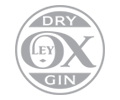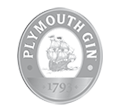 Geraldine Coates takes a closer look at the market for gin in Spain with the help of Paco Recuero, Global Director of Beefeater Gin.
Geraldine Coates takes a closer look at the market for gin in Spain with the help of Paco Recuero, Global Director of Beefeater Gin.
Spain is the second largest market in the world and the largest in Europe for premium gin. And, although Spain has many gin brands of its own including the biggest one Larios, there is a huge appetite for premium imported gin particularly from the UK. For example one bar Gintime recently visited in Madrid had 60 or so gins and 35 of them were from the UK.
In fact Spain consumes more premium UK produced gin per head of the population than any other country in the world. Thank you very much Spain!
But why is this? Many historical reasons lie behind the Spanish love affair with British gin. First of all we have to remember that gin became an important British export largely due to the British Royal Navy who took gin with them wherever they went.
And the British Navy went everywhere particularly the Mediterranean. In 1713 the British ruled Menorca in the Balearics and established a British base there. This meant Menorca had a strong British influence, and strengthened the demand for British products such as gin. The main reason we have Gin De Mahon aka Xoriguer Gin is that local entrepreneurs capitalised on the British fondness for the juniper spirit and cleverly made their own version. Although the British left Menorca in 1802, there’s already a distinctively Spanish style of gin copied from the British.
In 1713 too Gibraltar on mainland Spain became a British colony. Visiting Gibraltar in the mid-19th century, the English writer Richard Ford wrote in his Handbook for Travellers in Spain describing the town’s Main Street as “the antithesis of a Spanish town”, lined with “innumerable pot–houses” which made it a “den of gin and intemperance”.
So gin was also huge in Gibraltar because of the British presence and Gibraltar was the hub of smuggling. Impossible to think that, alongside tobacco and other luxury goods, British gin was not smuggled into Spain too.
Perhaps the most important historic influence on developing a taste for British gin in Spain however was the British involvement in the Spanish wine and spirits trade in 18th and 19th centuries particularly sherry.
In the late 1700’s, foreign wine merchants, from countries such as Scotland, Ireland, France and England, began to start vineyards and produce sherry in the Jerez region of Spain. Sherry has always been a very popular drink amongst the British and indeed the British could have been said to have invented the sherry trade. Some of the English and Anglo Spanish families who established successful businesses in Spain had names like Harvey, Sandeman. Berry, and Gonzalez, indeed Gonzalez Byass is still today run by a family member – Maurizio González Gordon. These are names to conjure with in the drinks trade.
At the same time as they imported goods from Spain these ever growing specialist drinks companies would almost certainly have sold British spirits like gin and whisky to selected Spanish customers. Another bit of history that lies behind the Spanish craze for British gin.
The current Spanish gin market is a phenomenon. Despite the recession and the troubled economic climate in Spain the premium gin market continues to grow by some estimate as much as 18 per cent a year. Growth for the super premium sector is even higher.
To understand this better, Gintime caught up with Paco Recuero who is not only the Global Director of Beefeater Gin but also Spanish so has particular insight into what drives the Spanish gin market.
Paco made the important point that until about 15 years ago the gin category in Spain was mostly about Spanish brands and imported gin was relatively small compared to whisky and rum. “What changed this was that established brands like Beefeater, Gordons and Tanqueray began to invest in the Spanish market to build their brands and expand their consumer base”.
So successful have they been in this that any new brand launching now makes Spain a priority and there are currently literally hundreds of brands on the Spanish market.
Paco also pointed out that the Spanish consumer base for gin is different with a much bigger proportion of younger demographic gin drinkers than anywhere else. That explains why drinking gin is not just for early evening aperitif occasions. In Spain gin with coca cola is still a nightclub drink whilst the famous Spanish GinTonic has exploded in the bar and club scene.
“The Spanish consumer is also traditionally more conservative. Typically even in hard times they will continue to spend on quality as we are seeing now. Also very importantly the gin category there, through the Gintonica, is the only spirits category that is currently innovating and offering something different and new.”
We’ve already featured the amazing Spanish GinTonic and the reasons behind its rise here – https://www.gintime.com/features/viva-lespana/
Specialist gin bars are behind much of the GinTonic boom. This is a relatively new phenomenon that is also found in other countries like the UK and the US. At Gintime we are always astonished at the multitude of new bars that are completely focused on gin and gin cocktails. This wasn’t happening even five years ago and it is a real sign of the energy that is currently around gin. And, as Paco explains: “professionalism in the Spanish bar trade has greatly increased. Bartenders now really understand the complexity and craftsmanship attached to gin production and the botanical subtleties that make each brand different. It is their knowledge and passion that has driven the GinTonic explosion”.
The other driver in the renaissance of gin is the willingness of both established and new brands to innovate. For a long time gin was relatively unexciting compared to such categories as vodka or Scotch. There were not many new products or brand innovation. That has changed.
So from Beefeater we have seen developments like Beefeater 24 and the new Burrough’s Reserve. Tanqueray and Gordons have both developed new expressions. Larios has launched a more premium variant too. When we look at the newer brands those that fall into the super premium bracket like Beefeater 24, Hendricks, No. 3, Tanqueray 10, Citadelle etc are enjoying the fastest growth worldwide and particularly in Spain. In fact super premium gin has grown faster than Scotch, cognac and vodka there.
Some commentators have implied that it is a bit risky for the Spanish bar trade to be too reliant on the Gintonica as the growth driver. Paco’s view is that it’s more complicated: “The Spanish style GinTonic is already being used by many gin brands in other territories where it is very much a summer drink. Above all it’s a drink that is particularly suited to the Spanish way of life and also lends itself to customising it towards customers’ personal tastes. That in turn involves customers in making decisions and opens up dialogue on the qualities of the drink and its different flavours. It also very much reflects the current trend of drinking less but drinking better.”
And, of course, knowing more about what they are drinking.
Here we can thank the marketeers. Instead of copying vodka as they did for many years focusing on style and packaging, they have changed direction. Now it’s all about what’s inside the bottle. Bombay Sapphire started this when it launched and was the only brand that detailed its botanicals on the packaging. Now almost all gin brands do that. And it’s absolutely the correct thing to do. Vodka is an ideal mixable spirit because of its neutral flavour but gin is characterised by its depth of flavour, complexity and richness. Gin is about status, discernment and knowledge and is more comparable to Scotch whisky and not vodka.
What about the future? If we look into a crystal ball and think about whether this current growth is sustainable we should first look at the challenges for gin in mature markets such as Spain. Paco is very clear on this: “the main danger that with all these new products the market becomes over saturated and both the trade and consumers lose interest and become cynical. But there are many reasons to think that in Spain as in the rest of the world there is plenty of room for development and further growth. For example in the UK and the US, the other two main global markets, the focus in London and New York is still very much on classic Prohibition style cocktails where what is required is strong juniper led gins of high quality. That has not really been fully explored in Spain but there is no reason to think it won’t. “
It would be foolish to think that the Spanish are so obsessed with the GinTonic that they disregard the trends that continue to attract new audiences for gin around the world. Barrel aged gin, Old Tom gins, new flavours, new mixers, signature serves, bottling at different alcoholic strengths, seasonal drinking, we both agree that there are endless possibilities. For the past four hundred or so years gin has showed itself very capable of adapting and evolving. That won’t change.




